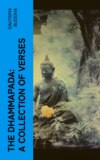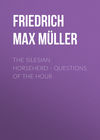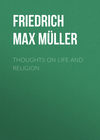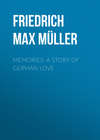Kitabı oku: «Chips from a German Workshop, Volume 1», sayfa 16
'The top of the mountain rises to the sky. Since the beginning of the world the snow has been accumulating, and is now transformed into vast masses of ice, which never melt, either in spring or summer. Hard and brilliant sheets of snow are spread out till they are lost in the infinite, and mingle with the clouds. If one looks at them, the eyes are dazzled by the splendour. Frozen peaks hang down over both sides of the road, some hundred feet high, and twenty feet or thirty feet thick. It is not without difficulty and danger that the traveller can clear them or climb over them. Besides, there are squalls of wind, and tornadoes of snow which attack the pilgrims. Even with double shoes, and in thick furs, one cannot help trembling and shivering.'
During the seven days that Hiouen-thsang crossed these Alpine passes he lost fourteen of his companions.
What is most important, however, in this early portion of the Chinese traveller is the account which he gives of the high degree of civilisation among the tribes of Central Asia. We had gradually accustomed ourselves to believe in an early civilisation of Egypt, of Babylon, of China, of India; but now that we find the hordes of Tatary possessing in the seventh century the chief arts and institutions of an advanced society, we shall soon have to drop the name of barbarians altogether. The theory of M. Oppert, who ascribes the original invention of the cuneiform letters and a civilisation anterior to that of Babylon and Nineveh to a Turanian or Scythian race, will lose much of its apparent improbability; for no new wave of civilisation had reached these countries between the cuneiform period of their literature and history and the time of Hiouen-thsang's visit. In the kingdom of Okini, on the western frontier of China, Hiouen-thsang found an active commerce, gold, silver, and copper coinage; monasteries, where the chief works of Buddhism were studied, and an alphabet, derived from Sanskrit. As he travelled on he met with mines, with agriculture, including pears, plums, peaches, almonds, grapes, pomegranates, rice, and wheat. The inhabitants were dressed in silk and woollen materials. There were musicians in the chief cities who played on the flute and the guitar. Buddhism was the prevailing religion, but there were traces of an earlier worship, the Bactrian fire-worship. The country was everywhere studded with halls, monasteries, monuments, and statues. Samarkand formed at that early time a kind of Athens, and its manners were copied by all the tribes in the neighbourhood. Balkh, the old capital of Bactria, was still an important place on the Oxus, well fortified, and full of sacred buildings. And the details which our traveller gives of the exact circumference of the cities, the number of their inhabitants, the products of the soil, the articles of trade, can leave no doubt in our minds that he relates what he had seen and heard himself. A new page in the history of the world is here opened, and new ruins pointed out, which would reward the pickaxe of a Layard.
But we must not linger. Our traveller, as we said, had entered India by way of Kabul. Shortly before he arrived at Pou-lou-cha-pou-lo, i. e. the Sanskrit Purushapura, the modern Peshawer, Hiouen-thsang heard of an extraordinary cave, where Buddha had formerly converted a dragon, and had promised his new pupil to leave him his shadow, in order that, whenever the evil passions of his dragon-nature should revive, the aspect of his master's shadowy features might remind him of his former vows. This promise was fulfilled, and the dragon-cave became a famous place of pilgrimage. Our traveller was told that the roads leading to the cave were extremely dangerous, and infested by robbers—that for three years none of the pilgrims had ever returned from the cave. But he replied, 'It would be difficult during a hundred thousand Kalpas to meet one single time with the true shadow of Buddha; how could I, having come so near, pass on without going to adore it?' He left his companions behind, and after asking in vain for a guide, he met at last with a boy who showed him to a farm belonging to a convent. Here he found an old man who undertook to act as his guide. They had hardly proceeded a few miles when they were attacked by five robbers. The monk took off his cap and displayed his ecclesiastical robes. 'Master,' said one of the robbers, 'where are you going?' Hiouen-thsang replied, 'I desire to adore the shadow of Buddha.' 'Master,' said the robber, 'have you not heard that these roads are full of bandits?' 'Robbers are men,' Hiouen-thsang exclaimed, 'and at present, when I am going to adore the shadow of Buddha, even though the roads were full of wild beasts, I should walk on without fear. Surely, then, I ought not to fear you, as you are men whose heart is possessed of pity.' The robbers were moved by these words, and opened their hearts to the true faith. After this little incident, Hiouen-thsang proceeded with his guide. He passed a stream rushing down between two precipitous walls of rock. In the rock itself there was a door which opened. All was dark. But Hiouen-thsang entered, advanced towards the east, then moved fifty steps backwards, and began his devotions. He made one hundred salutations, but he saw nothing. He reproached himself bitterly with his former sins, he cried, and abandoned himself to utter despair, because the shadow of Buddha would not appear before him. At last, after many prayers and invocations, he saw on the eastern wall a dim light, of the size of a saucepan, such as the Buddhist monks carry in their hands. But it disappeared. He continued praying full of joy and pain, and again he saw a light, which vanished like lightning. Then he vowed, full of devotion and love, that he would never leave the place till he had seen the shadow of the 'Venerable of the age.' After two hundred prayers, the cave was suddenly bathed in light, and the shadow of Buddha, of a brilliant white colour, rose majestically on the wall, as when the clouds suddenly open and, all at once, display the marvellous image of the 'Mountain of Light.' A dazzling splendour lighted up the features of the divine countenance. Hiouen-thsang was lost in contemplation and wonder, and would not turn his eyes away from the sublime and incomparable object.... After he awoke from his trance, he called in six men, and commanded them to light a fire in the cave, in order to burn incense; but, as the approach of the light made the shadow of Buddha disappear, the fire was extinguished. Then five of the men saw the shadow, but the sixth saw nothing. The old man who had acted as guide was astounded when Hiouen-thsang told him the vision. 'Master,' he said, 'without the sincerity of your faith, and the energy of your vows, you could not have seen such a miracle.'
This is the account given by Hiouen-thsang's biographers. But we must say, to the credit of Hiouen-thsang himself, that in the 'Si-yu-ki,' which contains his own diary, the story is told in a different way. The cave is described with almost the same words. But afterwards, the writer continues: 'Formerly, the shadow of Buddha was seen in the cave, bright, like his natural appearance, and with all the marks of his divine beauty. One might have said, it was Buddha himself. For some centuries, however, it can no longer be seen completely. Though one does see something, it is only a feeble and doubtful resemblance. If a man prays with sincere faith, and if he has received from above a hidden impression, he sees the shadow clearly, but he cannot enjoy the sight for any length of time.'
From Peshawer, the scene of this extraordinary miracle, Hiouen-thsang proceeded to Kashmir, visited the chief towns of Central India, and arrived at last in Magadha, the Holy Land of the Buddhists. Here he remained five years, devoting all his time to the study of Sanskrit and Buddhist literature, and inspecting every place hallowed by the recollections of the past. He then passed through Bengal, and proceeded to the south, with a view of visiting Ceylon, the chief seat of Buddhism. Baffled in that wish, he crossed the peninsula from east to west, ascended the Malabar coast, reached the Indus, and, after numerous excursions to the chief places of North-Western India, returned to Magadha, to spend there, with his old friends, some of the happiest years of his life. The route of his journeyings is laid down in a map drawn with exquisite skill by M. Vivien de Saint-Martin. At last he was obliged to return to China, and, passing through the Penjab, Kabulistan, and Bactria, he reached the Oxus, followed its course nearly to its sources on the plateau of Pamir, and, after staying some time in the three chief towns of Turkistan, Khasgar, Yarkand, and Khoten, he found himself again, after sixteen years of travels, dangers, and studies, in his own native country. His fame had spread far and wide, and the poor pilgrim, who had once been hunted by imperial spies and armed policemen, was now received with public honours by the Emperor himself. His entry into the capital was like a triumph. The streets were covered with carpets, flowers were scattered, and banners flying. Soldiers were drawn up, the magistrates went out to meet him, and all the monks of the neighbourhood marched along in solemn procession. The trophies that adorned this triumph, carried by a large number of horses, were of a peculiar kind. First, 150 grains of the dust of Buddha; secondly, a golden statue of the great Teacher; thirdly, a similar statue of sandal-wood; fourthly, a statue of sandal-wood, representing Buddha as descending from heaven; fifthly, a statue of silver; sixthly, a golden statue of Buddha conquering the dragons; seventhly, a statue of sandal-wood, representing Buddha as a preacher; lastly, a collection of 657 works in 520 volumes. The Emperor received the traveller in the Phoenix Palace, and, full of admiration for his talents and wisdom, invited him to accept a high office in the Government. This Hiouen-thsang declined. 'The soul of the administration,' he said, 'is still the doctrine of Confucius;' and he would dedicate the rest of his life to the Law of Buddha. The Emperor thereupon asked him to write an account of his travels, and assigned him a monastery where he might employ his leisure in translating the works he had brought back from India. His travels were soon written and published, but the translation of the Sanskrit MSS. occupied he whole rest of his life. It is said that the number of works translated by him, with the assistance of a large staff of monks, amounted to 740, in 1,335 volumes. Frequently he might be seen meditating on a difficult passage, when suddenly it seemed as if a higher spirit had enlightened his mind. His soul was cheered, as when a man walking in darkness sees all at once the sun piercing the clouds and shining in its full brightness; and, unwilling to trust to his own understanding, he used to attribute his knowledge to a secret inspiration of Buddha and the Bodhisattvas. When he found that the hour of death approached, he had all his property divided among the poor. He invited his friends to come and see him, and to take a cheerful leave of that impure body of Hiouen-thsang. 'I desire,' he said, 'that whatever merits I may have gained by good works may fall upon other people. May I be born again with them in the heaven of the blessed, be admitted to the family of Mi-le, and serve the Buddha of the future, who is full of kindness and affection. When I descend again upon earth to pass through other forms of existence, I desire at every new birth to fulfil my duties towards Buddha, and arrive at the last at the highest and most perfect intelligence. He died in the year 664—about the same time that Mohammedanism was pursuing its bloody conquests in the East, and Christianity began to shed its pure light over the dark forests of Germany.
It is impossible to do justice to the character of so extraordinary a man as Hiouen-thsang in so short a sketch as we have been able to give. If we knew only his own account of his life and travels—the volume which has just been published at Paris—we should be ignorant of the motives which guided him and of the sufferings which he underwent. Happily, two of his friends and pupils had left an account of their teacher, and M. Stanislas Julien has acted wisely in beginning his collection of the Buddhist Pilgrims with the translation of that biography. There we learn something of the man himself and of that silent enthusiasm which supported him in his arduous work. There we see him braving the dangers of the desert, scrambling along glaciers, crossing over torrents, and quietly submitting to the brutal violence of Indian Thugs. There we see him rejecting the tempting invitations of Khans, Kings, and Emperors, and quietly pursuing among strangers, within the bleak walls of the cell of a Buddhist college, the study of a foreign language, the key to the sacred literature of his faith. There we see him rising to eminence, acknowledged as an equal by his former teachers, as a superior by the most distinguished scholars of India; the champion of the orthodox faith, an arbiter at councils, the favourite of Indian kings. In his own work there is hardly a word about all this. We do not wish to disguise his weaknesses, such as they appear in the same biography. He was a credulous man, easily imposed upon by crafty priests, still more easily carried away by his own superstitions; but he deserved to have lived in better times, and we almost grudge so high and noble a character to a country not our own, and to a religion unworthy of such a man. Of selfishness we find no trace in him. His whole life belonged to the faith in which he was born, and the objects of his labour was not so much to perfect himself as to benefit others. He was an honest man. And strange, and stiff, and absurd, and outlandish as his outward appearance may seem, there is something in the face of that poor Chinese monk, with his yellow skin and his small oblique eyes, that appeals to our sympathy—something in his life, and the work of his life, that places him by right among the heroes of Greece, the martyrs of Rome, the knights of the crusades, the explorers of the Arctic regions—something that makes us feel it a duty to inscribe his name on the roll of the 'forgotten worthies' of the human race. There is a higher consanguinity than that of the blood which runs through our veins—that of the blood which makes our hearts beat with the same indignation and the same joy. And there is a higher nationality than that of being governed by the same imperial dynasty—that of our common allegiance to the Father and Ruler of all mankind.
It is but right to state that we owe the publication, at least of the second volume of M. Julien's work, to the liberality of the Court of Directors of the East-India Company. We have had several opportunities of pointing out the creditable manner in which that body has patronized literary and scientific works connected with the East, and we congratulate the Chairman, Colonel Sykes, and the President of the Board of Control, Mr. Vernon Smith, on the excellent choice they have made in this instance. Nothing can be more satisfactory than that nearly the whole edition of a work which would have remained unpublished without their liberal assistance, has been sold in little more than a month.
April, 1857.
XI.
THE MEANING OF NIRVÂNA
To the Editor of The Times
Sir,—Mr. Francis Barham, of Bath, has protested in a letter, printed in 'The Times' of the 24th of April, against my interpretations of Nirvâna, or the summum bonum of the Buddhists. He maintains that the Nirvâna in which the Buddhists believe, and which they represent as the highest goal of their religion and philosophy, means union and communion with God, or absorption of the individual soul by the divine essence, and not, as I tried to show in my articles on the 'Buddhist Pilgrims,' utter annihilation.
I must not take up much more of your space with so abstruse a subject as Buddhist metaphysics; but at the same time I cannot allow Mr. Barham's protest to pass unnoticed. The authorities which he brings forward against my account of Buddhism, and particularly against my interpretation of Nirvâna, seem formidable enough. There is Neander, the great church historian, Creuzer, the famous scholar, and Hue, the well-known traveller and missionary,—all interpreting, as Mr. Barham says, the Nirvâna of the Buddhists in the sense of an apotheosis of the human soul, as it was taught in the Vedânta philosophy of the Brahmans, the Sufiism of the Persians, and the Christian mysticism of Eckhart and Tauler, and not in the sense of absolute annihilation.
Now, with regard to Neander and Creuzer, I must observe that their works were written before the canonical books of the Buddhists, composed in Sanskrit, had been discovered, or at least before they had been sent to Europe, and been analysed by European scholars. Besides, neither Neander nor Creuzer was an Oriental scholar, and their knowledge of the subject could only be second-hand. It was in 1824 that Mr. Brian Houghton Hodgson, then resident at the Court of Nepal, gave the first intimation of the existence of a large religious literature written in Sanskrit, and preserved by the Buddhists of Nepal as the canonical books of their faith. It was in 1830 and 1835 that the same eminent scholar and naturalist presented the first set of these books to the Royal Asiatic Society in London. In 1837 he made a similar gift to the Société Asiatique of Paris, and some of the most important works were transmitted by him to the Bodleian Library at Oxford. It was in 1844 that the late Eugène Burnouf published, after a careful study of these documents, his classical work, 'Introduction à l'Histoire du Buddhisme Indien,' and it is from this book that our knowledge of Buddhism may be said to date. Several works have since been published, which have added considerably to the stock of authentic information on the doctrine of the great Indian reformer. There is Burnouf's translation of 'Le Lotus de la bonne Loi,' published after the death of that lamented scholar, together with numerous essays, in 1852. There are two interesting works by the Rev. Spence Hardy—'Eastern Monachism,' London, 1850, and 'A Manual of Buddhism,' London, 1853; and there are the publications of M. Stanislas Julien, E. Foucaux, the Honourable George Turnour, Professor H. H. Wilson, and others, alluded to in my article on the 'Buddhist Pilgrims.' It is from these works alone that we can derive correct and authentic information on Buddhism, and not from Neander's 'History of the Christian Church' or from Creuzer's 'Symbolik.'
If any one will consult these works, he will find that the discussions on the true meaning of Nirvâna are not of modern date, and that, at a very early period, different philosophical schools among the Buddhists of India, and different teachers who spread the doctrine of Buddhism abroad, propounded every conceivable opinion as to the orthodox explanation of this term. Even in one and the same school we find different parties maintaining different views on the meaning of Nirvâna. There is the school of the Svâbhâvikas, which still exists in Nepal. The Svâbhâvikas maintain that nothing exists but nature, or rather substance, and that this substance exists by itself (svabhâvât), without a Creator or a Ruler. It exists, however, under two forms: in the state of Pravritti, as active, or in the state of Nirvritti, as passive. Human beings, who, like everything else, exist svabhâvât, 'by themselves,' are supposed to be capable of arriving at Nirvritti, or passiveness, which is nearly synonymous with Nirvâna. But here the Svâbhâvikas branch off into two sects. Some believe that Nirvritti is repose, others that it is annihilation; and the former add, 'were it even annihilation (sûnyatâ), it would still be good, man being otherwise doomed to an eternal migration through all the forms of nature; the more desirable of which are little to be wished for; and the less so, at any price to be shunned.'84
What was the original meaning of Nirvâna may perhaps best be seen from the etymology of this technical term. Every Sanskrit scholar knows that Nirvâna means originally the blowing out, the extinction of light, and not absorption. The human soul, when it arrives at its perfection, is blown out,85 if we use the phraseology of the Buddhists, like a lamp; it is not absorbed, as the Brahmans say, like a drop in the ocean. Neither in the system of Buddhist philosophy, nor in the philosophy from which Buddha is supposed to have borrowed, was there any place left for a Divine Being by which the human soul could be absorbed. Sânkhya philosophy, in its original form, claims the name of an-îsvara, 'lordless' or 'atheistic' as its distinctive title. Its final object is not absorption in God, whether personal or impersonal, but Moksha, deliverance of the soul from all pain and illusion, and recovery by the soul of its true nature. It is doubtful whether the term Nirvâna was coined by Buddha. It occurs in the literature of the Brahmans as a synonyme of Moksha, deliverance; Nirvritti, cessation; Apavarga, release; Nihsreyas, summum bonum. It is used in this sense in the Mahâbhârata, and it is explained in the Amara-Kosha as having the meaning of 'blowing out, applied to a fire and to a sage.'86 Unless, however, we succeed in tracing this term in works anterior to Buddha, we may suppose that it was invented by him in order to express that meaning of the summum bonum which he was the first to preach, and which some of his disciples explained in the sense of absolute annihilation.
The earliest authority to which we can go back, if we want to know the original character of Buddhism, is the Buddhist Canon, as settled after the death of Buddha at the first Council. It is called Tripitaka, or the Three Baskets, the first containing the Sûtras, or the discourses of Buddha; the second, the Vinaya, or his code of morality; the third, the Abhidharma, or the system of metaphysics. The first was compiled by Ânanda, the second by Upâli, the third by Kâsyapa—all of them the pupils and friends of Buddha. It may be that these collections, as we now possess them, were finally arranged, not at the first, but at the third Council. Yet, even then, we have no earlier, no more authentic, documents from which we could form an opinion as to the original teaching of Buddha; and the Nirvâna, as taught in the metaphysics of Kâsyapa, and particularly in the Pragnâ-pâramitâ, is annihilation, not absorption. Buddhism, therefore, if tested by its own canonical books, cannot be freed from the charge of Nihilism, whatever may have been its character in the mind of its founder, and whatever changes it may have undergone in later times, and among races less inured to metaphysical discussions than the Hindus.
The ineradicable feeling of dependence on something else, which is the life-spring of all religion, was completely numbed in the early Buddhist metaphysicians, and it was only after several generations had passed away, and after Buddhism had become the creed of millions, that this feeling returned with increased warmth, changing, as I said in my article, the very Nothing into a paradise, and deifying the very Buddha who had denied the existence of a Deity. That this has been the case in China we know from the interesting works of the Abbé Huc, and from other sources, such as the 'Catechism of the Shamans, or the Laws and Regulations of the Priesthood of Buddha in China,' translated by Ch. F. Neumann, London, 1831. In India, also, Buddhism, as soon as it became a popular religion, had to speak a more human language than that of metaphysical Pyrrhonism. But, if it did so, it was because it was shamed into it. This we may see from the very nicknames which the Brahmans apply to their opponents, the Bauddhas. They call them Nâstikas—those who maintain that there is nothing; Sûnyavadins-those who maintain that there is a universal void.
The only ground, therefore, on which we may stand, if we wish to defend the founder of Buddhism against the charges of Nihilism and Atheism, is this, that, as some of the Buddhists admit, the 'Basket of Metaphysics' was rather the work of his pupils, not of Buddha himself.87 This distinction between the authentic words of Buddha and the canonical books in general, is mentioned more than once. The priesthood of Ceylon, when the manifest errors with which their canonical commentaries abound, were brought to their notice, retreated from their former position, and now assert that it is only the express words of Buddha that they receive as undoubted truth.88 There is a passage in a Buddhist work which reminds us somewhat of the last page of Dean Milman's 'History of Christianity,' and where we read:
'The words of the priesthood are good; those of the Rahats (saints) are better; but those of the All-knowing are the best of all.'
This is an argument which Mr. Francis Barham might have used with more success, and by which he might have justified, if not the first disciples, at least the original founder of Buddhism. Nay, there is a saying of Buddha's which tends to show that all metaphysical discussion was regarded by him as vain and useless. It is a saying mentioned in one of the MSS. belonging to the Bodleian Library. As it has never been published before, I may be allowed to quote it in the original: Sadasad vikâram na sahate,—'The ideas of being and not being do not admit of discussion,'—a tenet which, if we consider that it was enunciated before the time of the Eleatic philosophers of Greece, and long before Hegel's Logic, might certainly have saved us many an intricate and indigestible argument.
A few passages from the Buddhist writings of Nepal and Ceylon will best show that the horror nihili was not felt by the metaphysicians of former ages in the same degree as it is felt by ourselves. The famous hymn which resounds in heaven when the luminous rays of the smile of Buddha penetrate through the clouds, is 'All is transitory, all is misery, all is void, all is without substance.' Again, it is said in the Pragnâ-pâramitâ,89 that Buddha began to think that he ought to conduct all creatures to perfect Nirvâna. But he reflected that there are really no creatures which ought to be conducted, nor creatures that conduct; and, nevertheless, he did conduct all creatures to perfect Nirvâna. Then, continues the text, why is it said that there are neither creatures which arrive at complete Nirvâna, nor creatures which conduct there? Because it is illusion which makes creatures what they are. It is as if a clever juggler, or his pupil, made an immense number of people to appear on the high road, and after having made them to appear, made them to disappear again. Would there be anybody who had killed, or murdered, or annihilated, or caused them to vanish? No. And it is the same with Buddha. He conducts an immense, innumerable, infinite number of creatures to complete Nirvâna, and yet there are neither creatures which are conducted, nor creatures that conduct. If a Bodhisattva, on hearing this explanation of the Law, is not frightened, then it may be said that he has put on the great armour.90
Soon after, we read: 'The name of Buddha is nothing but a word. The name of Bodhisattva is nothing but a word. The name of Perfect Wisdom (Pragnâ-pâramitâ) is nothing but a word. The name is indefinite, as if one says "I," for "I" is something indefinite, because it has no limits.'
Burnouf gives the gist of the whole Pragnâ-pâramitâ in the following words: 'The highest Wisdom, or what is to be known, has no more real existence than he who has to know, or the Bodhisattva; no more than he who does know, or the Buddha.' But Burnouf remarks that nothing of this kind is to be found in the Sûtras, and that Gautama Sâkya-muni, the son of Suddhodana, would never have become the founder of a popular religion if he had started with similar absurdities. In the Sûtras the reality of the objective world is denied; the reality of form is denied; the reality of the individual, or the 'I,' is equally denied. But the existence of a subject, of something like the Purusha, the thinking substance of the Sânkhya philosophy, is spared. Something at least exists with respect to which everything else may be said not to exist. The germs of the ideas, developed in the Pragnâ-pâramitâ, may indeed be discovered here and there in the Sûtras.91 But they had not yet ripened into that poisonous plant which soon became an indispensable narcotic in the schools of the later Buddhists. Buddha himself, however, though, perhaps, not a Nihilist, was certainly an Atheist. He does not deny distinctly either the existence of gods, or that of God; but he ignores the former, and he is ignorant of the latter. Therefore, if Nirvâna in his mind was not yet complete annihilation, still less could it have been absorption into a Divine essence. It was nothing but selfishness, in the metaphysical sense of the word—a relapse into that being which is nothing but itself. This is the most charitable view which we can take of the Nirvâna, even as conceived by Buddha himself, and it is the view which Burnouf derived from the canonical books of the Northern Buddhists. On the other hand, Mr. Spence Hardy, who in his works follows exclusively the authority of the Southern Buddhists, the Pâli and Singhalese works of Ceylon, arrives at the same result. We read in his work: 'The Rahat (Arhat), who has reached Nirvâna, but is not yet a Pratyeka-buddha, or a Supreme Buddha, says: "I await the appointed time for the cessation of existence. I have no wish to live; I have no wish to die. Desire is extinct."'
In a very interesting dialogue between Milinda and Nâgasena, communicated by Mr. Spence Hardy, Nirvâna is represented as something which has no antecedent cause, no qualities, no locality. It is something of which the utmost we may assert is, that it is:






